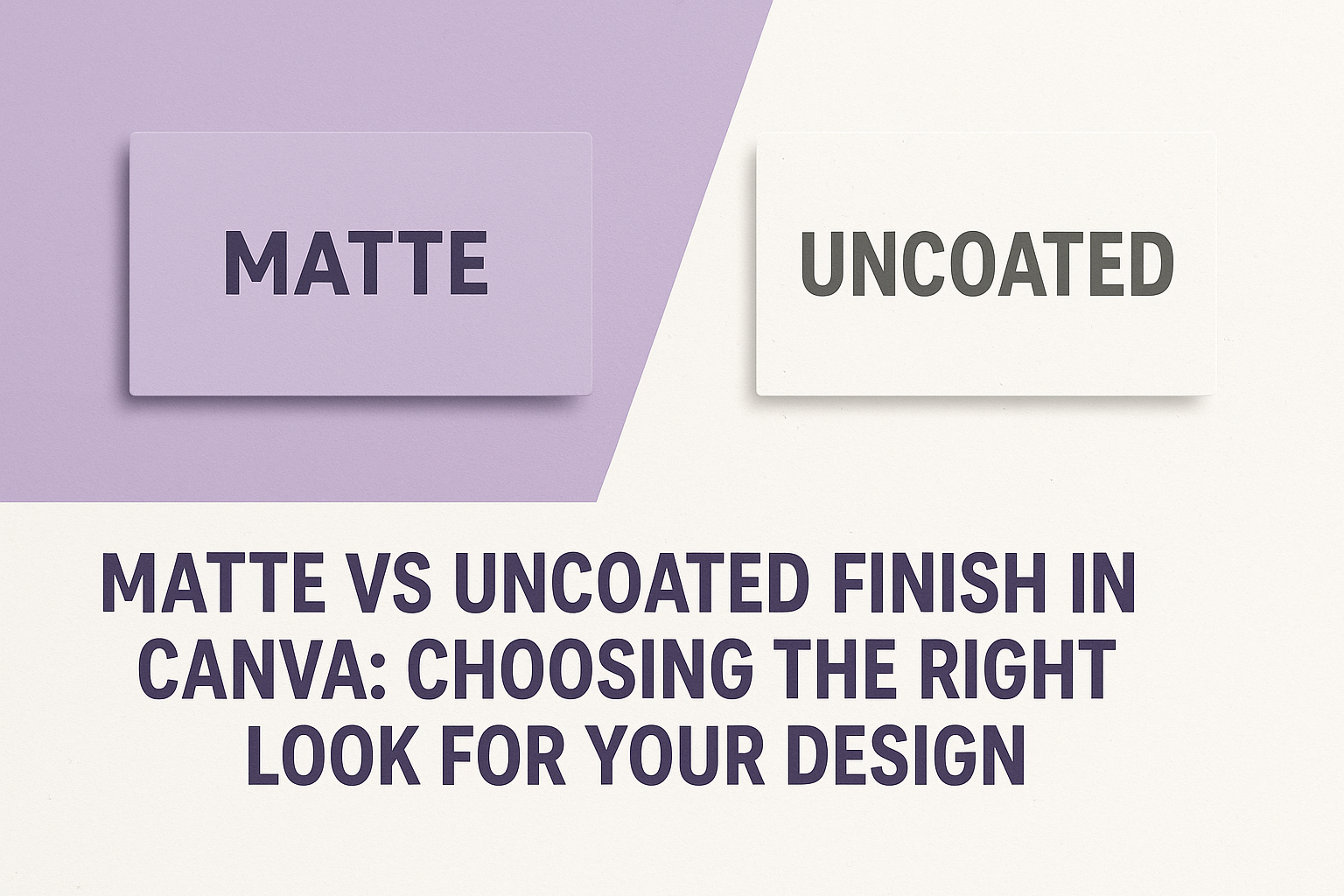Choosing the right finish for a project can make a big difference in its overall look.
Matte finishes are sleek and elegant, while uncoated finishes offer a more natural and rustic feel.
Each finish has its unique characteristics that can enhance specific design elements and suit different styles.
In Canva, users often wonder which finish will work best for their designs.
Matte finishes provide a smooth, non-reflective surface that works well for vibrant colors, while uncoated finishes allow for a more tactile experience and are great for vintage designs.
Understanding these differences helps in making a more informed choice for personal or professional projects.
Exploring Matte and Uncoated Finishes
Matte and uncoated finishes offer unique looks and feels for various design projects. Each finish has distinct characteristics that may cater to different preferences and purposes.
Characteristics of Matte Finish
Matte finish provides a soft, non-glossy appearance. It is often applied to coated paper, giving it a smooth surface.
This type of finish enhances contrast in images, making colors appear richer without the glare that shiny surfaces often produce.
Many people prefer matte for its elegant feel. It’s less reflective, making it easier to read text.
Matte surfaces are ideal for photos and artwork where clarity and depth matter. Writing on matte paper is straightforward, as it works well with most ink types.
Characteristics of Uncoated Finish
Uncoated finish features a more natural, textured feel. Unlike matte paper, it doesn’t have a coating that alters its surface.
This type of finish allows for a rustic or vintage look, which many designers favor.
Uncoated paper absorbs ink differently, giving designs a softer appearance. Colors may look slightly muted compared to coated papers, which can be a plus for certain styles.
Writing on uncoated finishes is simple, but heavier inks may smudge. This makes it a great choice for invites or stationery focused on tactile experiences.
Design Considerations in Canva
When creating designs in Canva, it’s essential to think about how elements like color, image quality, and typography will affect the final product. These factors can significantly impact the way a design is perceived.
Color and Image Reproduction
Choosing the right color can make or break a design. For projects that use a matte finish, colors tend to appear softer and more muted. This might be ideal for those aiming for a subtle look.
Conversely, an uncoated finish provides a more natural feel, allowing colors to blend beautifully.
When it comes to image reproduction, coated paper usually provides sharper images, making it a preferred choice for vibrant designs.
If aiming for clarity and vividness, it’s crucial to select the appropriate finish. Both finishes can influence how colors and images appear in the final product.
Typography and Readability
Typography plays a vital role in design. For best results, he or she should consider how text appears against various finishes.
On matte finishes, fonts might look softer, which can enhance readability for some designs. This is especially beneficial for scenic or nature-oriented themes.
With uncoated finishes, the texture can affect letter clarity. Using bolder fonts can help maintain readability.
It’s crucial to balance fonts and finish types to ensure the text remains legible. Choosing the right combination can elevate any design in Canva significantly.
Practical Applications and Use Cases
Choosing the right finish can make a big difference in design quality and effectiveness. Understanding when to use a matte finish or an uncoated finish can help achieve the desired look and feel for various projects.
When to Choose Matte Finish
Matte finishes are ideal for designs featuring a lot of text. The non-glossy surface enhances readability and gives documents a clean appearance.
For example, wedding invitations and brochures often benefit from this option because it allows for easy reading without glare.
Another advantage is that matte finishes provide a sophisticated and modern look. They work well for designs that aim to convey elegance.
Businesses may use matte finishes for professional documents, such as reports or proposals, to create a polished presentation.
Additionally, matte finishes are excellent for products that may be handled often. The surface is less prone to fingerprints and scratches. This makes it a practical choice for items like menus, flyers, and booklets.
When to Choose Uncoated Finish
Uncoated finishes are perfect for projects needing a more natural, vintage feel.
This finish features a rough texture that absorbs ink well. It is a great choice for invitations or stationery that aim for a handmade look.
Uncoated finishes are also suitable for large amounts of text, as they offer excellent readability.
The traditional style works well for announcements, personal letters, or literary publications.
This option may be ideal for artists and creatives who want to showcase their unique style.
It adds a tactile quality that can set designs apart. Overall, uncoated finishes can enhance the personality of creative projects.

